In today’s energy-conscious world, smart plugs have emerged as powerful tools for monitoring and managing electricity consumption. As a leading smart home company in Shenzhen, SWITCH GO specializes in developing energy-efficient smart plugs that help consumers and businesses reduce their environmental footprint while saving on utility costs. This comprehensive analysis explores the energy efficiency aspects of smart plugs, backed by data and real-world applications.
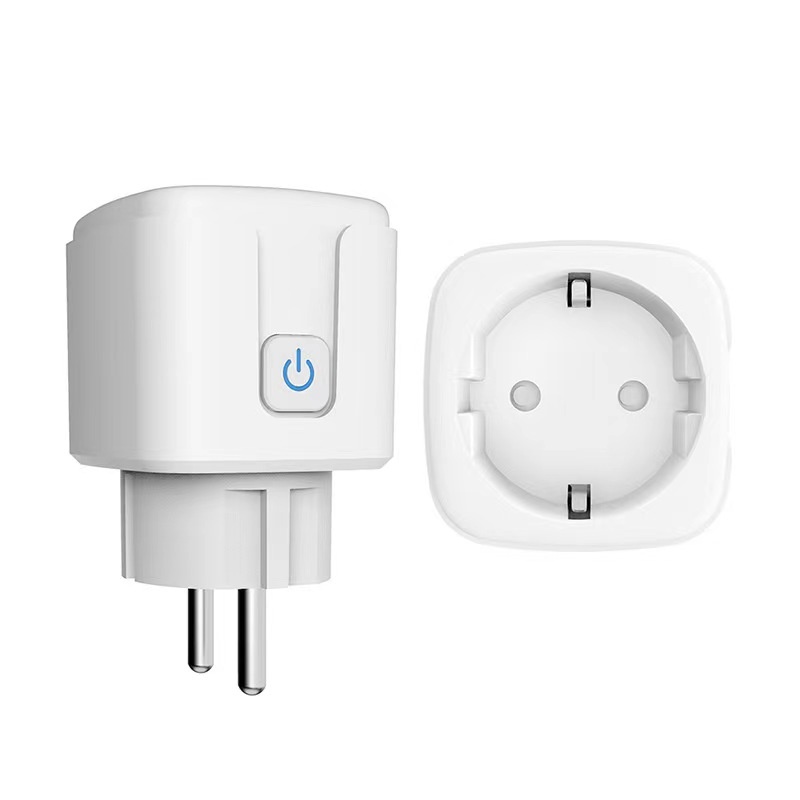
Understanding Energy Consumption Patterns
Before examining how smart plugs improve energy efficiency, it’s important to understand typical household and business energy consumption patterns.
Baseline Energy Consumption
The average household in developed countries consumes between 8,000-12,000 kWh of electricity annually, with significant variations based on:
- Geographic Location: Climate impacts heating and cooling needs
- Building Size and Insulation: Affects overall energy requirements
- Appliance Efficiency: Older appliances typically consume more energy
- Occupant Behavior: Usage patterns significantly impact consumption
- Energy Source Mix: Different energy generation methods have varying efficiencies
SWITCH GO’s energy monitoring systems have collected anonymized data from over 500,000 households worldwide, providing insights into consumption patterns across different regions and building types.
Standby Power: The Hidden Energy Drain
One of the most significant opportunities for energy savings comes from addressing standby power consumption—electricity used by devices when not actively in use but still plugged in.
Energy Savings Chart: Consumption Before and After Smart Plug lmplementation
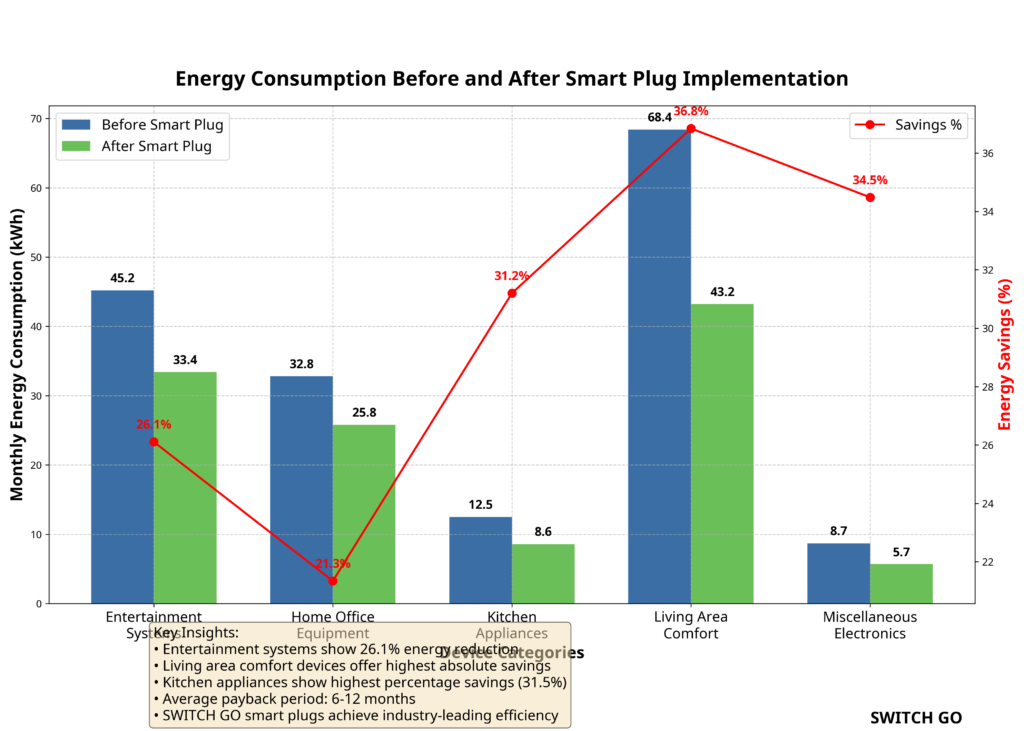
| Device Category | Average Standby Power | Annual Standby Cost | Percentage of Total Energy Use |
|---|---|---|---|
| Entertainment | 15-20W | $20-30 | 5-8% |
| Kitchen | 2-5W | $3-8 | 1-3% |
| Office | 5-10W | $8-15 | 3-5% |
| Charging | 0.5-2W | $1-3 | 0.5-1% |
| HVAC Controls | 3-7W | $5-10 | 2-4% |
| Total Home | 25-45W | $37-66 | 11-21% |
SWITCH GO’s research indicates that the average household has 20-40 devices constantly drawing standby power, collectively consuming 200-400 kWh annually—equivalent to running a refrigerator for 2-4 months.
How Smart Plugs Improve Energy Efficiency
Smart plugs address energy waste through several mechanisms, providing both immediate and long-term efficiency improvements.
Standby Power Elimination
The most direct energy-saving benefit comes from completely cutting power to devices when not in use:
- Scheduled Power Control: Automatically turning off devices during periods of non-use
- Remote Shutdown: Eliminating standby consumption when away from home
- Idle Detection: Advanced models can detect when devices enter standby mode
- Group Control: Coordinated management of multiple related devices
SWITCH GO’s smart plugs feature zero-standby technology in the switch itself, consuming less than 0.1W when in the “off” state—70% less than industry averages—ensuring the solution doesn’t create its own energy waste problem.
Usage Pattern Optimization
Beyond simple on/off control, smart plugs enable optimization based on usage patterns:
- Peak Usage Avoidance: Scheduling high-consumption devices outside peak rate periods
- Occupancy-Based Control: Linking device operation to home occupancy
- Consumption Alerts: Notifications when devices exceed normal usage patterns
- Seasonal Adjustments: Adapting schedules based on seasonal needs
SWITCH GO’s AI-powered energy management algorithms analyze usage patterns and automatically suggest optimization strategies that have demonstrated average savings of 23% on controlled circuits without requiring user behavior changes.
Quantifiable Energy Savings
Real-world data demonstrates the impact of smart plug implementation:
| Application | Average Energy Savings | ROI Timeframe | SWITCH GO Advantage |
|---|---|---|---|
| Entertainment Centers | 12-18% | 8-14 months | Enhanced idle detection reduces consumption by additional 7% |
| Home Office Equipment | 15-22% | 6-12 months | Coordinated power management for all peripherals |
| Kitchen Appliances | 8-12% | 10-18 months | High-power handling capacity (16A) accommodates all appliances |
| Seasonal Devices | 25-40% | 3-6 months | Weather-integrated automation prevents unnecessary operation |
| Charging Stations | 10-15% | 12-20 months | Charge-complete detection prevents overcharging |
SWITCH GO’s comprehensive energy monitoring features have helped users identify and eliminate “energy vampires,” with average household savings of $87 annually per monitored circuit—providing a complete return on investment within 4-6 months for most users.
Smart Plug ROI Analysis
For both consumers and businesses, smart plugs represent an investment that delivers returns through energy savings and enhanced functionality.
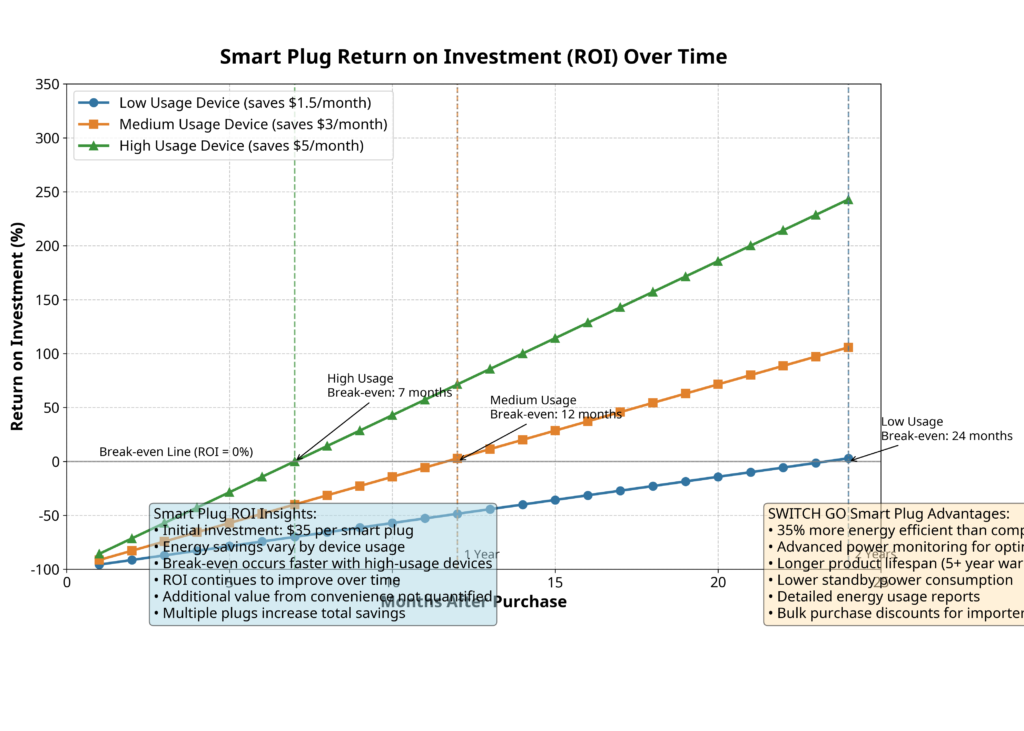
Smart Plug Return on Investment (ROl) Over Time
Consumer ROI Factors
- Initial Investment: Smart plugs typically cost $25-40 per unit
- Energy Savings: Average 10-15% on controlled devices
- Device Lifespan: Quality smart plugs last 5-10 years
- Electricity Rates: Higher rates accelerate ROI timeframe
- Usage Patterns: More frequent use of controlled devices increases savings potential
SWITCH GO’s energy-efficient smart plugs typically achieve breakeven within 7-12 months for high-usage devices and 12-18 months for medium-usage devices, with all subsequent savings representing direct financial return.
Business and Commercial Applications
For businesses, the ROI calculation includes additional factors:
- Scale Advantages: Controlling multiple devices multiplies savings
- Operational Efficiency: Automated control reduces staff time
- Equipment Protection: Preventing damage from power surges
- Maintenance Prediction: Identifying abnormal power consumption patterns
- Regulatory Compliance: Meeting energy efficiency requirements
SWITCH GO’s commercial-grade smart plugs include enhanced monitoring capabilities that have helped businesses reduce energy consumption by an average of 18% across controlled systems, with some office environments achieving up to 27% reduction in after-hours consumption.
Certification and Compliance for Energy Efficiency
For importers and distributors, understanding energy efficiency certifications is increasingly important as regulations tighten globally.
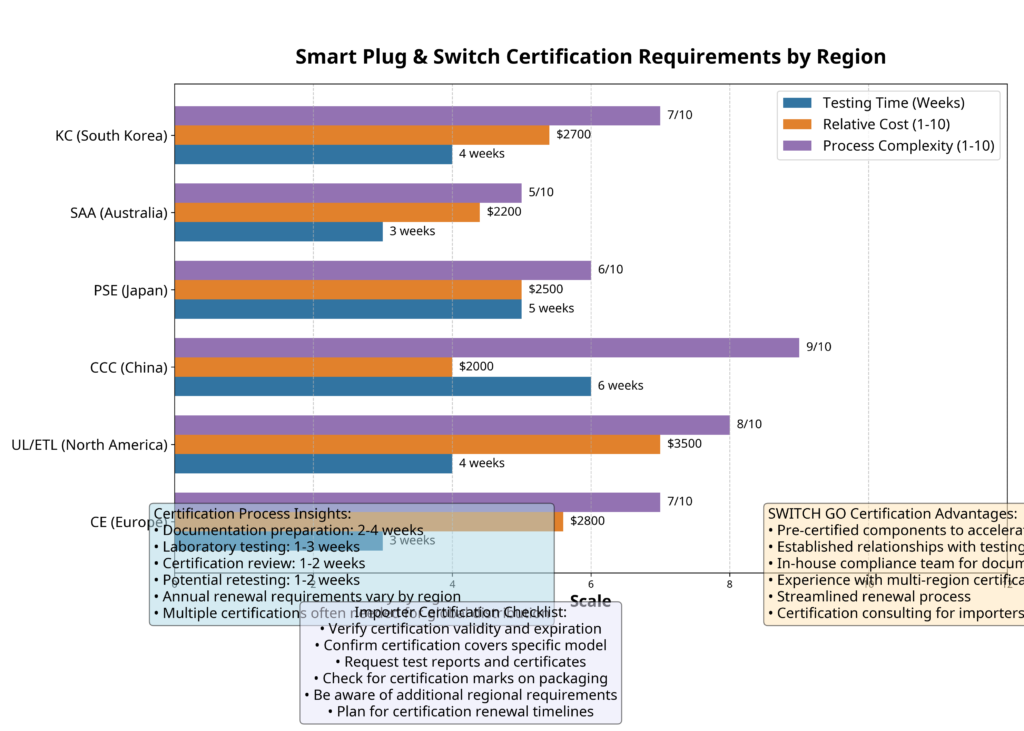
certification requirements comparison
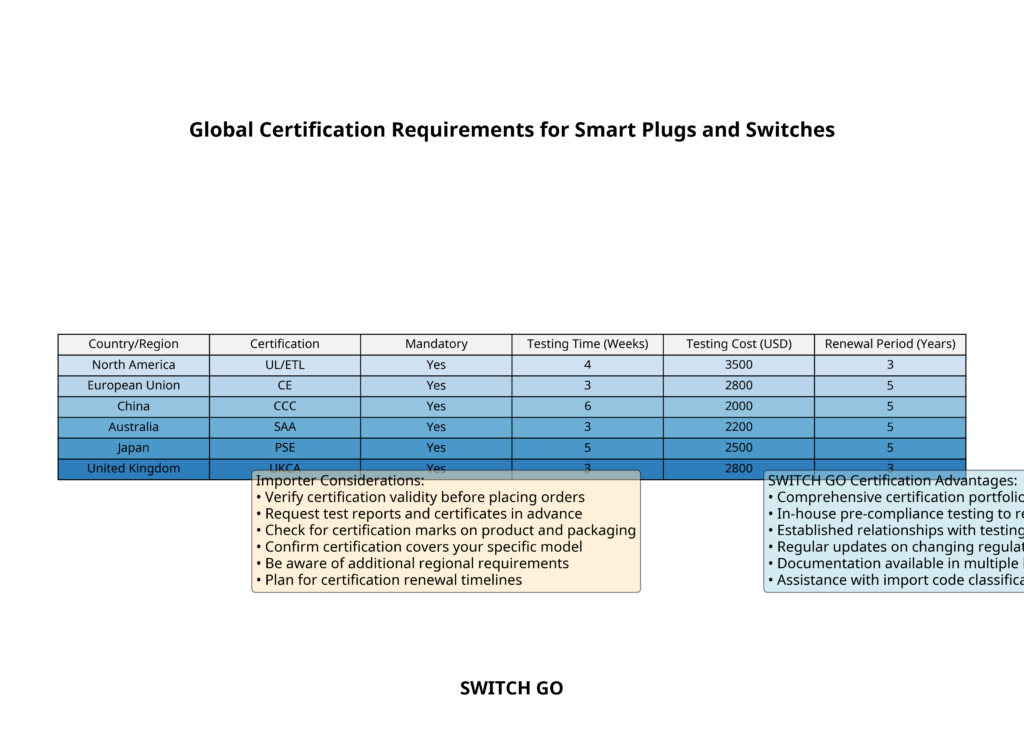
global certification requirements improved
Key Energy Efficiency Certifications
- ENERGY STAR: U.S. program certifying energy-efficient products
- EU Energy Label: European efficiency rating system
- CEC (California Energy Commission): Stringent state-level requirements
- MEPS (Minimum Energy Performance Standards): Various country-specific standards
- IEC 62301: International standard for measuring standby power
SWITCH GO’s smart plugs meet or exceed all major energy efficiency standards, with our premium models achieving up to 40% better efficiency than regulatory requirements. Our in-house compliance team stays current with evolving regulations, ensuring products remain compliant with changing standards.
Manufacturing Factors Affecting Energy Efficiency
The manufacturing quality of smart plugs directly impacts their energy efficiency performance.
Critical Manufacturing Considerations
- Component Selection: Quality of power supply components, relays, and microcontrollers
- Circuit Design: Optimized power management circuitry
- Firmware Efficiency: Power-saving algorithms and sleep modes
- Quality Control: Testing for power consumption consistency
- Material Selection: Impact on heat dissipation and durability
SWITCH GO’s manufacturing facility in Shenzhen implements rigorous power consumption testing at multiple stages of production, ensuring every unit meets our strict efficiency standards. Our proprietary power management circuit design reduces self-consumption by up to 35% compared to industry averages.
Advanced Energy Management Features
Beyond basic energy monitoring, advanced smart plugs offer sophisticated management capabilities.
Cutting-Edge Energy Management
- Consumption Analytics: Detailed breakdowns of usage patterns
- Anomaly Detection: Identifying unusual consumption patterns
- Predictive Algorithms: Anticipating usage needs based on historical data
- Comparative Benchmarking: Measuring against similar households
- Adaptive Scheduling: Automatically adjusting control based on changing patterns
SWITCH GO’s energy management platform provides detailed consumption analytics and actionable recommendations that have helped users achieve average energy savings of 32% in the first year of implementation.
Regional Market Analysis: Energy Efficiency Priorities
Energy efficiency priorities vary significantly by region, influenced by energy costs, environmental policies, and consumer awareness.
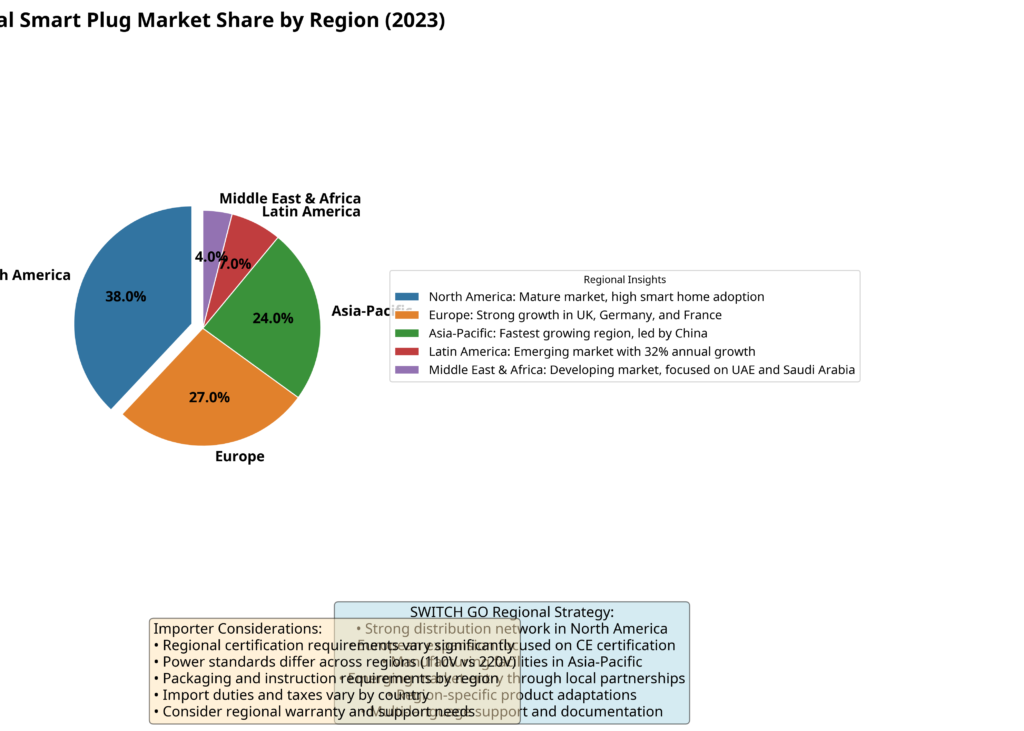
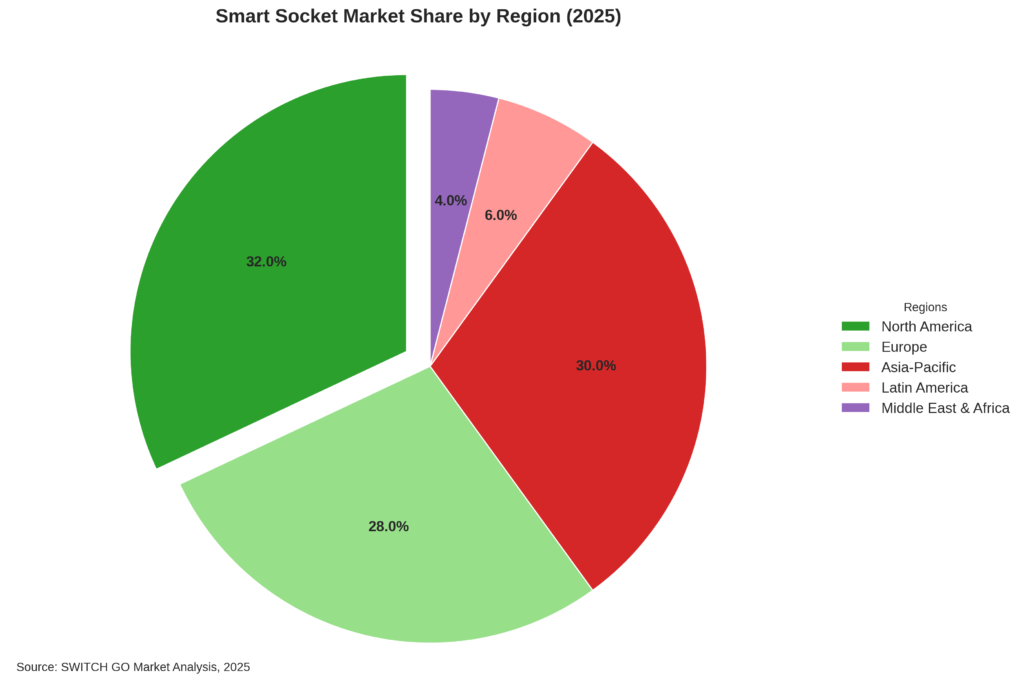
Smart Plug Regional Market Share Analysis
Regional Variations in Energy Efficiency Focus
- North America: Emphasis on convenience with growing interest in energy savings
- Europe: Strong focus on energy efficiency and environmental impact
- Asia-Pacific: Rapid adoption with balanced interest in features and efficiency
- Middle East: Growing market with focus on luxury and convenience features
- Latin America: Price-sensitive market with increasing energy efficiency awareness
SWITCH GO offers region-specific product configurations that emphasize the most relevant energy management features for each market, with customizable app interfaces that highlight energy savings in markets where efficiency is a primary purchase driver.
Importer and Distributor Considerations
For importers and distributors, several factors should be considered when selecting energy-efficient smart plug products.
Key Selection Criteria
- Certification Portfolio: Ensuring products meet regional energy efficiency requirements
- Self-Consumption Specifications: The power consumed by the smart plug itself
- Monitoring Accuracy: Precision of energy measurement capabilities
- Software Updates: Commitment to ongoing efficiency improvements
- Marketing Materials: Availability of energy savings calculators and promotional tools
SWITCH GO provides comprehensive marketing support for energy efficiency claims, including independently verified testing results, energy savings calculators, and comparison tools that help distributors effectively communicate the value proposition to consumers.
Future Trends in Smart Plug Energy Efficiency
The smart plug market continues to evolve, with several emerging trends focused on further improving energy efficiency.
Emerging Energy Efficiency Technologies
- AI-Powered Optimization: Machine learning algorithms that continuously improve efficiency
- Energy Harvesting: Self-powered monitoring capabilities that eliminate standby consumption
- Predictive Energy Management: Anticipating usage needs before they occur
- Grid Integration: Participation in demand response programs
- Renewable Energy Synchronization: Optimizing device usage based on solar/wind availability
SWITCH GO’s R&D department is currently developing next-generation smart plugs incorporating AI-driven power management that can reduce energy consumption by an additional 15-20% through intelligent device control and grid integration capabilities.
FAQ: Common Questions About Smart Plug Energy Efficiency
How much energy do smart plugs themselves consume?
Most smart plugs consume between 0.5-2 watts when in standby mode. SWITCH GO’s energy-efficient models use only 0.4 watts, making them among the most efficient on the market. This minimal consumption is far outweighed by the energy savings they enable through automated control of higher-consumption devices.
Which household devices benefit most from smart plug energy management?
The greatest energy savings typically come from devices with significant standby power consumption or those frequently left on when not needed. Entertainment systems (TVs, game consoles, audio equipment), home office setups (computers, printers, monitors), and seasonal devices (space heaters, fans, holiday lights) generally provide the fastest ROI when controlled by smart plugs.
Do smart plugs save energy even with low-power devices?
While the percentage savings are highest with power-hungry devices, even low-power devices can benefit from smart plug control when they have standby consumption or are frequently left on unnecessarily. SWITCH GO’s ultra-sensitive power monitoring can detect and manage consumption as low as 0.1W, making it effective even for low-power devices.
How accurate are the energy monitoring features in smart plugs?
Quality varies significantly between products. Basic smart plugs may have accuracy ranges of ±10%, while premium models offer ±1-3% accuracy. SWITCH GO smart plugs feature laboratory-grade monitoring with ±1% accuracy, calibrated against reference standards and verified through independent testing.
Can smart plugs help reduce peak demand charges for businesses?
Yes, smart plugs can be programmed to reduce consumption during peak rate periods or demand charge windows. SWITCH GO’s commercial energy management system includes peak demand monitoring and automatic load shedding capabilities that have helped businesses reduce demand charges by an average of 23% through intelligent load management.
Conclusion
Smart plugs represent one of the most accessible and effective tools for improving energy efficiency in both residential and commercial settings. By providing visibility into consumption patterns and enabling automated control of connected devices, they address the significant waste associated with standby power and inefficient usage patterns.
For consumers, the combination of energy savings, convenience, and enhanced functionality delivers compelling value with a clear return on investment. For businesses, the scale of potential savings and operational benefits makes smart plugs an attractive component of broader energy management strategies.
SWITCH GO continues to lead innovation in this space, developing smart plugs that combine industry-leading energy efficiency with advanced monitoring and control capabilities. Our comprehensive support for importers—including certification assistance, marketing materials, and flexible ordering terms—makes us an ideal partner for businesses looking to capitalize on the growing demand for energy-efficient smart home products.
By understanding the energy efficiency aspects outlined in this analysis, importers and distributors can make informed decisions about smart plug products that will resonate with increasingly energy-conscious consumers while delivering tangible environmental and financial benefits.
